
Bevor wir unser eigenes Wohnmobil hatten, sind wir mit einem gemieteten Camper durch Yukon und Alaska gefahren. Diese Reise hat uns sehr für Kanada und Alaska begeistert.
Und dann haben wir zufällig die Dienstleistungen von SeaBridge entdeckt. Die Firma organisiert das Verschiffen von Wohnmobilen in alle Kontinente, u. A. auch nach Halifax im Osten Kanadas. Seitdem waren wir „infiziert“ von der Idee, mit unserem eigenen Womo durch Kanada zu reisen.
Six months Canada by camper Before we had our own camper, we rode a rented camper through Yukon and Alaska. This trip really got us excited about Canada and Alaska. And then, by chance, we discovered the services of SeaBridge. The company organizes the shipping of campers in all continents, i.a. also to Halifax in eastern Canada. Since then, we have been „infected“ by the idea of traveling through Canada with our own camper.
Reiseplanung
Mehr als ein Jahr lang haben wir die Reise geplant. Dabei konnten wir auf der Erfahrung der Yukon-Reise aufbauen. Eine gute Basis für die Einstimmung auf Geschichte, Staat und Gesellschaft des Landes war „Das Kanada-Lesebuch“ aus dem MANA-Verlag. Zur Planung konkreter Reiseziele haben wir uns inspirieren lassen vom Reisebildband „100 Highlights KANADA“ aus dem Bruckmann-Verlag.
Das kanadische Visum ist fünf Jahre gültig, aber je Einreise maximal sechs Monate. Damit war der zeitliche Rahmen gesetzt. Wie auf allen unseren Womo-Reisen gab es keine festgelegte Routen-Planung. Aber bis zum Start haben wir einige wesentliche Kriterien festgelegt:
- Reise im Sommerhalbjahr, ausschließlich durch Kanada, eventuell Abstecher nach Alaska
- Durchquerung Kanadas von Küste zu Küste
- Ausfuhrhafen des Wohnmobils = Einfuhrhafen: also Rundreise
- „Rückweg“ nach Osten auf völlig anderer Route als nach Westen
Außerdem hatten wir einige Wunsch-Regionen, -Routen und -Ziele:
- Neufundland
- Trans Labrador Highway
- Prärie im Südwesten Kanadas
- Nationalparks der kanadischen Rocky Mountains
- Vancouver Island
- per Schiff durch die Inside Passage an der Pazifikküste nach Norden
- Northwest Territories
- Nordlichter sehen und fotografieren
- Wood Buffalo National Park
- die Großen Seen
- Niagara Fälle
- Indian Summer in Kanadas Osten
- Gaspésie in Québec
- durch alle Provinzen
We have planned the trip for more than a year. We were able to build on the experience of the Yukon trip. A good basis for attuning to the history, state and society of the country was „Das Kanada-Lesebuch“ (The Canada Reader) from the MANA publishing house. For the planning of concrete travel destinations, we were inspired by the travel book „100 Highlights KANADA“ (100 Highlights CANADA) from the Bruckmann publishing house. The Canadian visa is valid for five years, but a maximum of six months per entry. This set the time frame. As with all our camper trips, there was no fixed route planning. But until the start, we have set some key criteria: We also had some wish regions, routes and destinations: Aus diesen Vorgaben haben wir vor Ort die Reise entwickelt, mit täglicher spontaner Routenplanung. Ein halbes Jahr waren wir im zweitgrößten Land der Erde unterwegs, von Mitte Mai bis Mitte November. 226 Blogbeiträge lassen keinen Zweifel an dem uneingeschränkten Vergnügen, dass uns diese Reise bereitet hat, aber auch an unserer Begeisterung für Kanada und die Kanadier. Insbesondere durch die vielen Fotos und zusammen mit den 32 Beiträgen aus Yukon ist damit ein recht guter Eindruck von Kanada möglich (mit Ausnahme der großen Städte). Bei unserem Start in Halifax, der Hauptstadt von Nova Scotia, war dort Vorfrühling. Unsere ersten Ziele auf dem Weg nach Norden waren Cape Breton Island und der Cape Breton Highlands National Park. Neufundland, das war in unserer Vorstellung eine Art Außenposten der Zivilisation. Es hat sich als großartiges Reiseziel erwiesen. Wir haben uns in diese Insel verliebt, trotz spätwinterlicher Bedingungen noch bis Mitte Juni. Am Trans Labrador Highway lag in der zweiten Junihälfte streckenweise noch Schnee. Nicht zuletzt die hinreißenden Begegnungen mit Bären haben diese Tour durch die Wildnis unvergesslich gemacht. Am offiziellen Sommeranfang haben wir im Norden von Québec vorerst zum letzten Mal Handschuhe und Mütze getragen. Nach zwei Tagen frühlingshaftem Wetter war dann Sommer. Den haben wir auf dem Weg nach Westen erlebt, zunächst durch die Provinzen Québec und Ontario. Die größten Unbekannten dieser Reise waren die Prärieprovinzen Manitoba und Saskatchewan. Sie kommen in den populären deutschen Reiseführern praktisch nicht vor. Uns haben sie begeistert, mit besonderen Landschaften, geologischen Sensationen und bei Tierbeobachtungen, aber auch mit den alten Getreidespeichern. In den südlichen Regionen von Saskatchewan, Alberta und British Columbia (BC) hatten wir dann Hochsommer. Die Nationalparks Banff und Jasper in den Rocky Mountains waren in dieser Zeit so überlaufen, dass wir es dort nicht lange ausgehalten haben. Zu den landschaftlichen Höhepunkten der Reise gehörte dennoch der Icefields Parkway, der sich durch die beiden Parks zieht. Auch Vancouver Island gehörte zu den Höhepunkten, allerdings auch bei den Temperaturen. Die Hitze war für uns Ende Juli mit der Schiffspassage durch die Inside Passage nach Prince Rupert vorbei. Danach hatten wir nur noch kurze hochsommerliche Phasen. Totems der dortigen First Nations (Indianer) haben uns im Nordwesten von BC beeindruckt. Weiter nördlich sind wir über den Glacier Highway zu einem Abstecher nach Stewart, Hyder in Alaska und zum Salmon Glacier hinauf gefahren. In den schier unendlichen Wäldern im Norden von BC waren wir mit Waldbränden konfrontiert. Bären und Bisons konnten wir mehrmals am Alaska Highway und in der menschenleeren Wildnis der Northwest Territories beobachten. Halbzeit und nördlichster Punkt der Reise war bei Yellowknife. Tatsächlich waren in den Northwest Territories Mitte August Nordlichter zu sehen, u. A. im Wood Buffalo National Park. Die Salt Plains im Park gehören wohl zu den bizarrsten Landschaften, die wir je erlebt haben. Auf dem Weg nach Süden hatten wir in Alberta das besondere Glück, zu einem Jamboree eingeladen zu sein. In Edmonton, der größten Stadt Albertas, hat die dortige Mercedes-Niederlassung die jährliche Inspektion unseres Sprinter durchgeführt. Den Termin hatten wir ein paar Tage vorher online gebucht. Im nördlichen Saskatchewan hatten wir in der ersten September-Nacht den ersten Nachtfrost. Am Tag ging es dann hoch her: Bei herrlichem Sommerwetter haben wir ein großes, internationales Powwow von First Nations aus ganz Nordamerika erlebt! Faszinierende Natur und Naturphänomene bis hin zu lila Nordlicht haben uns auf dem Weg durch Manitoba erfreut. Ein weiteres spektakuläres Ereignis war ein Rodeo im Süden der Provinz. In Ontario waren wir ab Mitte September im kanadischen Herbst angekommen, mit einigen heftigen Stürmen. Das hat uns nicht davon abgehalten, an der Route entlang der Großen Seen einige großartige Naturschönheiten zu erleben. Herausragend waren hier Anfang Oktober die Niagara Fälle. Indian Summer, ein wunderbarer Skulpturenpark und die Landschaften der Gaspésie haben uns in Québec ganz besonders erfreut. Ende Oktober war es dann in New Brunswick so herbstlich trüb, dass nur noch selten präsentable Fotos möglich waren. Immerhin hatten wir hier den ersten frischen Schnee in gleißendem Sonnenschein. Prince Edward Island mit seinen vielen sehenswerten Leuchttürmen hatte noch mal einzelne schöne Tage, aber auch die heftigsten Stürme. Etwas weniger stürmisch und mit ein paar sonnigen Herbsttagen an der Südküste von Nova Scotia ging Anfang November unsere sechsmonatige Wohnmobil-Reise durch Kanada zu Ende. Im zweiten Teil dieses Rückblicks behandeln wir die Natur in Kanada und einige kulturelle Aspekte der Reise.
Based on these guidelines, we have developed the trip locally, with daily spontaneous route planning. For half a year we were in the second largest country on earth, from mid-May to mid-November. 226 blog posts leave no doubt about the unreserved pleasure that this journey has given us, but also about our enthusiasm for Canada and the Canadians. In particular, through the many photos and along with the 32 posts from Yukon is a pretty good impression of Canada possible (with the exception of the big cities). When we started in Halifax, the capital of Nova Scotia, there was early spring. Our first destinations on the way north were Cape Breton Island and the Cape Breton Highlands National Park. Newfoundland, in our imagination, was a kind of outpost of civilization. It has proven to be a great travel destination. We fell in love with this island, despite late winter conditions until mid-June. At the Trans Labrador Highway there was still some snow in the second half of June. Last but not least, the captivating encounters with bears have made this tour through the wilderness unforgettable. At the official beginning of summer in the north of Quebec, we were wearing gloves and a hat for the last time for the present. After two days of spring weather, it was summer. We experienced it on the way west, first through the provinces of Quebec and Ontario. The biggest unknowns of this trip were the prairie provinces of Manitoba and Saskatchewan. They practically do not appear in the popular German travel guides. Us they have inspired, with special landscapes, geological sensations and animal observations, but also with the old grain elevators. In the southern regions of Saskatchewan, Alberta and British Columbia (BC) we had midsummer. The Banff and Jasper National Parks in the Rocky Mountains were so crowded during that time that we did not last long. Nevertheless one of the scenic highlights of the trip was the Icefields Parkway, which runs through the two parks. Vancouver Island, too, was one of the tops, but also in the temperatures. The heat was over for us at the end of July with the cruise on the Inside Passage to Prince Rupert. After that, we only had short midsummer phases. Totems of the local First Nations (Indians) have impressed us in the northwest of BC. Further north we drove over the Glacier Highway to a detour to Stewart, Hyder in Alaska and up to Salmon Glacier. In the vast forests of the north of BC, we were confronted with wildfires. Bears and bison we observed several times on the Alaska Highway and in the deserted wilderness of the Northwest Territories. Half time and northernmost point of the trip was near Yellowknife. In fact, Northern Lights were to be seen in the Northwest Territories in mid-August, i.a. in Wood Buffalo National Park. The Salt Plains in the park are some of the most bizarre landscapes we have ever encountered. On the way south in Alberta, we were lucky enough to be invited to a jamboree. In Edmonton, the largest city in Alberta, the Mercedes subsidiary has carried out the annual inspection of our Sprinter. The appointment we had booked a few days before online. In northern Saskatchewan we had the first night frost during the first night of September. On the day it went high: In beautiful summer weather, we have experienced a great, international powwow of First Nations from all over North America! Fascinating nature and natural phenomena up to purple northern lights have delighted us on the way through Manitoba. Another spectacular event was a rodeo in the south of the province. In Ontario, in mid-September we had arrived in the Canadian autumn, with some violent storms. That did not stop us from experiencing some great natural beauties along the route along the Great Lakes. Outstanding here were the Niagara Falls in early October. Indian Summer, a wonderful sculpture park and the landscapes of the Gaspésie have particularly pleased us in Québec. At the end of October New Brunswick was so autumnly murky that only rarely presentable photos were possible. After all, we had here the first fresh snow in glistening sunshine. Prince Edward Island with its many lighthouses worth seeing still had some beautiful days, but also the heaviest storms. Slightly less stormy and with a few sunny autumn days on the south coast of Nova Scotia, our six-month campervan trip through Canada came to an end in early November. In the second part of this review we will look at the nature in Canada and some cultural aspects of the journey. Travel planning
Reiseverlauf


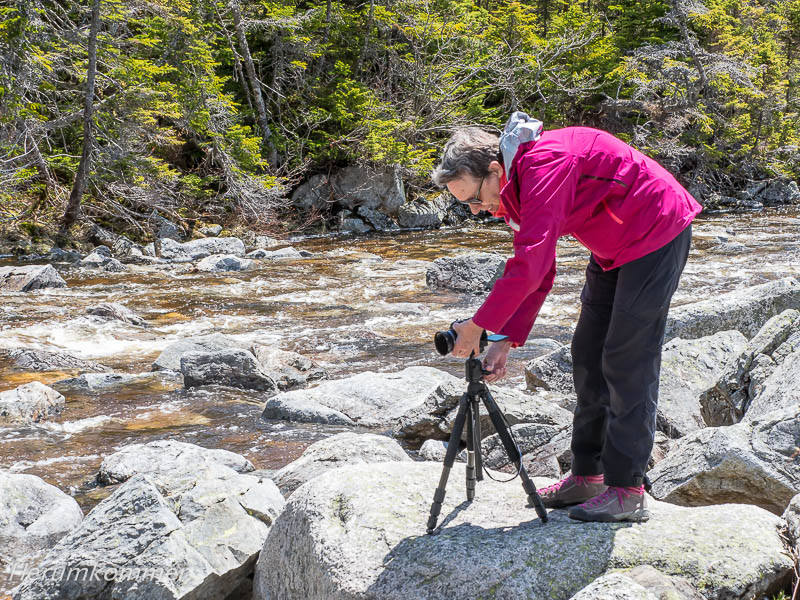









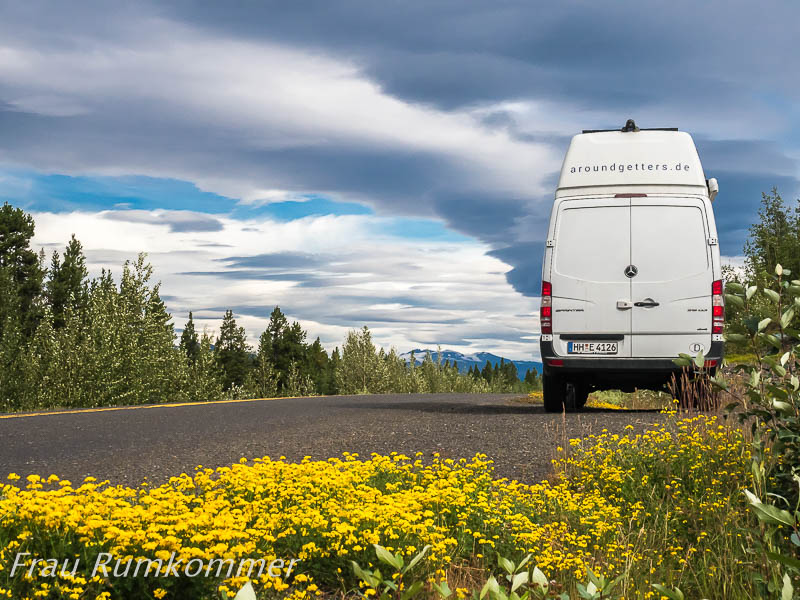




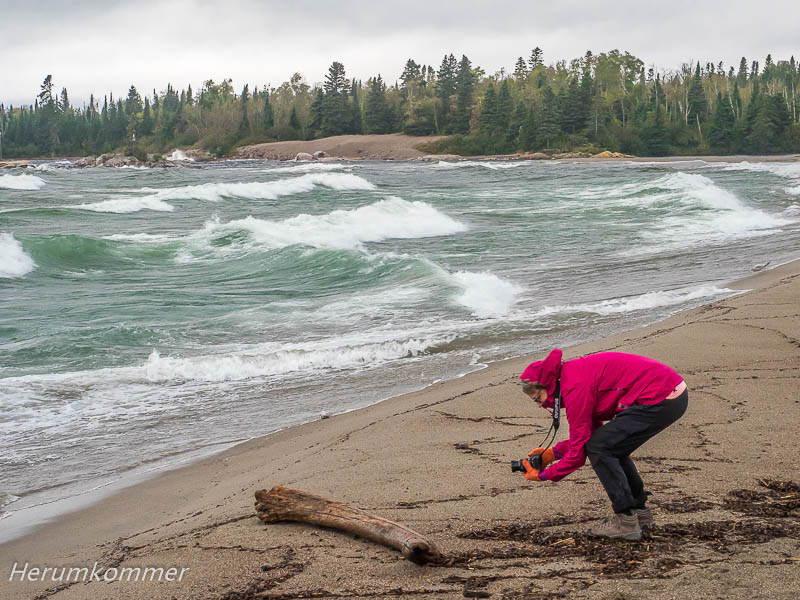

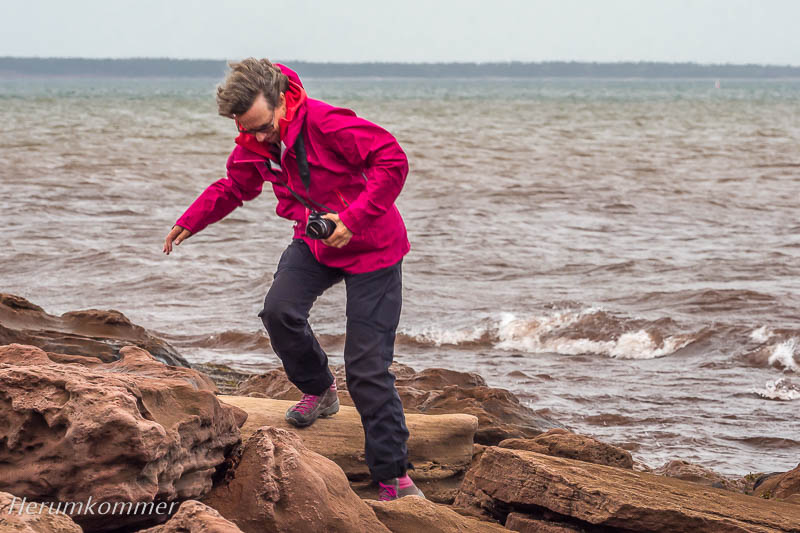
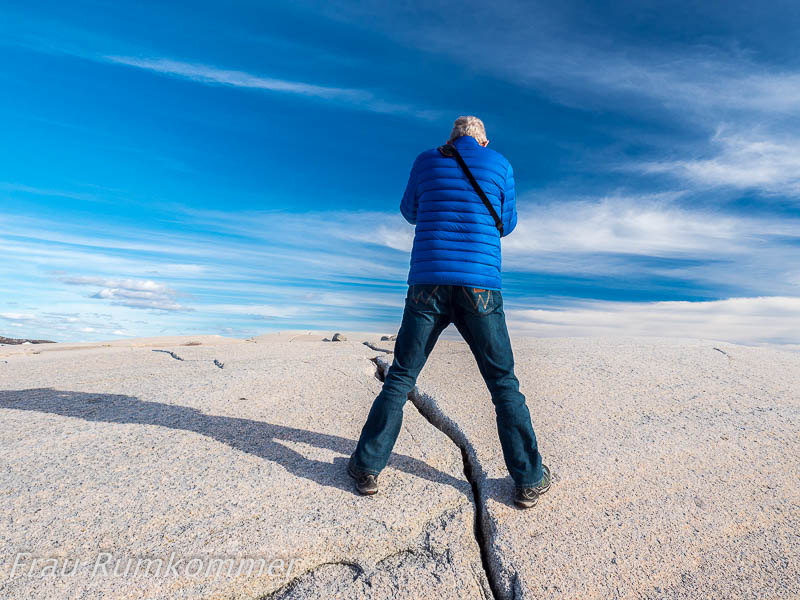
Itinerary
Nice to catch up on your travels, Reinhard and Krim. I would say that your research really paid off. WE have travelled for many years, coast to coast to coast in Canada, and couldn’t do any better.
Garry and Cheryl A.
Hi Cheryl and Garry,
thank you for your overwhelming comment.
We gladly remember meeting you in the summer heat at Fort Nelson.
Krim and Reinhard